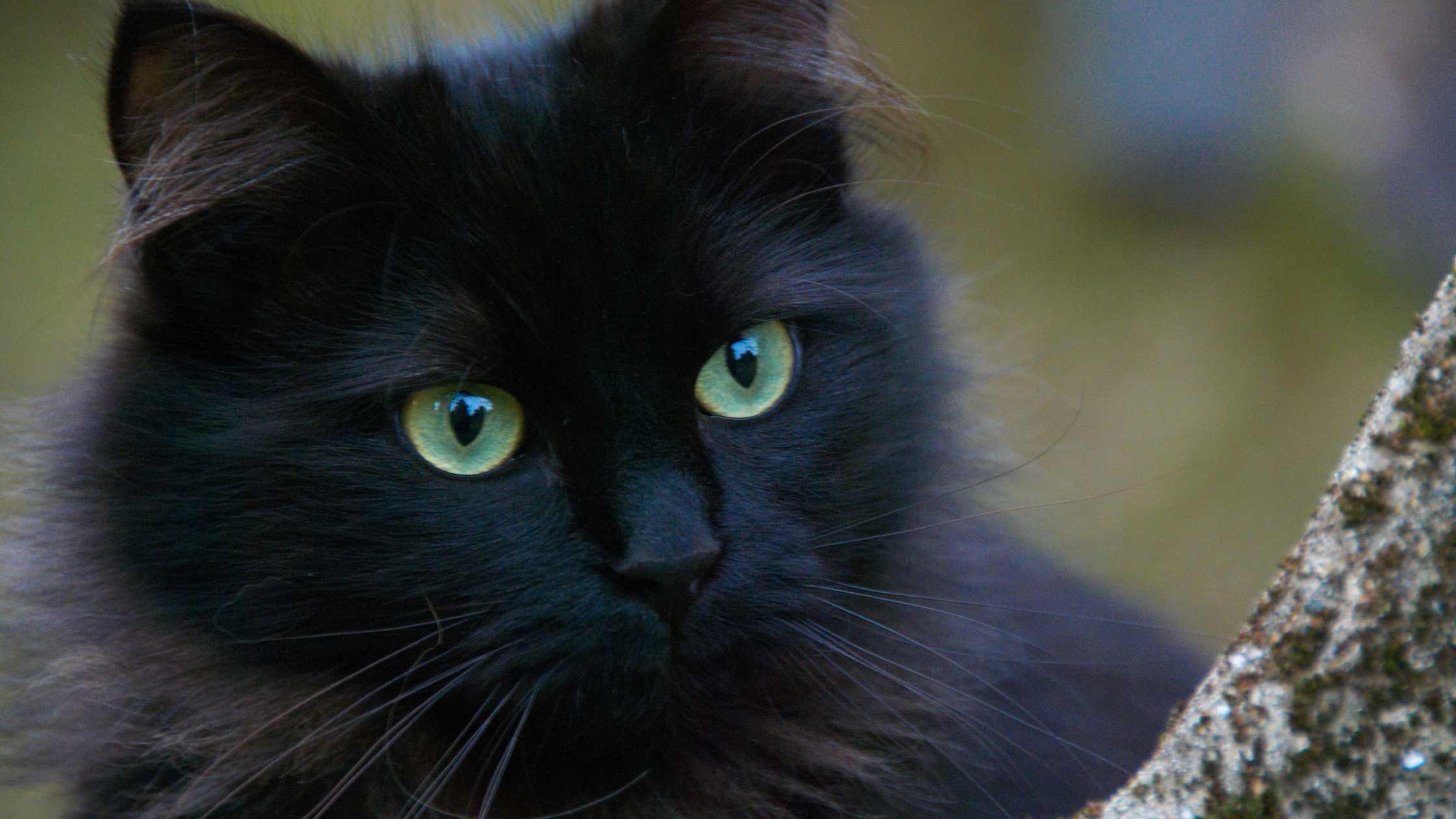In American folklore, women accused of witchcraft were believed to have black cats as their familiars, offering companionship and protection
In the United States, especially around Halloween, black cats are often linked to witchcraft and spooky superstitions that date back to Puritan times. The association with witchcraft is an old European belief brought to America, especially heightened during the witch trials. During those times, many women accused of witchcraft were believed to have turned into black cats so that they could do evil things. Some lore believe that witches kept black cats to serve as their familiars, offering companionship and spiritual protection. A familiar is a supernatural companion.
However, many modern cat lovers and animal organizations are promoting the idea that black cats bring love and protection to counteract the negative stereotypes.

In Japan, it is believed that black cats can help single women find potential romantic partners
In Japan, black cats are considered symbols of good fortune. Specifically, the “maneki-neko” (beckoning cat), sometimes portrayed as black, is thought to bring protection against evil as well as prosperity and good fortune.
Black cats are also considered lucky for single women since they are believed to attract potential lovers.
The maneki-neko is usually depicted as white or gold, but black versions do exist and are associated with protection from evil spirits.

In the United Kingdom, sailors used to keep black cats on ships as they believed the cats would ensure safe passage and protect the crew from storms
In the UK and Ireland, a black cat crossing your path is seen as a sign of good luck—the opposite of what many believe elsewhere. Sailors used to keep black cats on ships as they believed the cats would ensure safe passage and protect the crew from storms.

In Ancient Egypt, black cats were considered symbols of protection with magical powers to ward off evil
To be fair, the specific mention of black cats as having “magical powers” is more of a generalization from later folklore. In Ancient Egypt, all cats were considered protective, not just black ones.
Cats were highly revered in Ancient Egypt, especially because of their role in controlling pests like mice and snakes. They were closely associated with the goddess Bastet, who was the deity of home, fertility, and protection.
Killing any cat, regardless of color, was sometimes punishable by death.

In Celtic folklore, black cats were believed to be fairy creatures in disguise—bringing prosperity and protection
In Celtic folklore, black cats were sometimes considered fairy beings or shape-shifters with magical properties. In some stories, they brought prosperity and protection, while in others, they were to be feared or treated with respect. The belief in cats as magical beings varied greatly across different Celtic regions.

In Scottish folklore, the “cat-sìth” is a mythical black cat believed to haunt the Scottish Highlands stealing the souls of the dead before burial
The people of the Scottish Highlands were wary of the cat-sìth (pronounced “kat-shee”), believing it had the power to steal a person’s soul before it could be claimed by the gods. This could happen if the cat passed over a corpse before burial.
To prevent this, people held constant vigils, known as the “Fèill Fhadalach” (or a “late wake”), to guard the body. To keep the cat-sìth away from the deceased during these wakes, people would play games, solve riddles, and play music. Fires were also avoided near the body since it was believed the cat-sìth was drawn to the warmth.

In French folklore, the “matagot” is a black cat that brings good fortune if treated with respect
The “matagot” or “mandagot” in French folklore is a supernatural creature, often depicted as a black cat, believed to bring fortune to those who treat it well. If treated with respect, it is said to reward its owner with riches and good luck. This belief is particularly strong in southern France.








